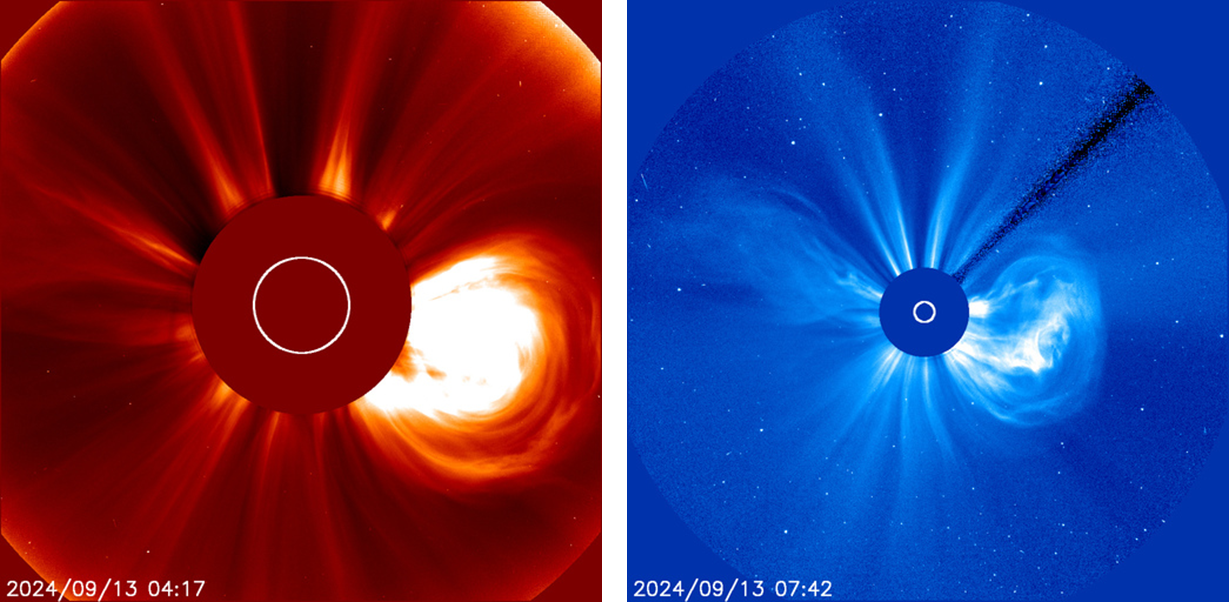Solar activity has remained high during the first half of September, with the recent X1 and X4 flares by NOAA 3825 as prime examples (see the STCE newsflash). There were also some additional, really stunning eruptions during those 2 weeks. On 1 September, peaking at 13:22UTC, a region near or just beyond the southeast solar limb (maybe NOAA 3813) produced a long duration M5.5 flare which was accompanied by a magnificent set of post-eruption coronal loops as well as supra-arcade downflows or "SADs" (see this STCE newsitem for more info). Despite the far eastern location, the greater than 10 MeV proton flux became enhanced and reached a peak of 6 pfu on 3 September, which is still well below the event threshold of 10 pfu. The imagery underneath shows the eruption in extreme ultraviolet (EUV ; GOES/SUVI 094).

Several coronal mass ejections (CMEs) have been observed, including halo CMEs. However, the halo CMEs of 3, 5 and 9 September all had their source on the farside of the Sun and were not directed to the Earth (see SOHO/LASCO C3 imagery underneath - Compilation). Old active regions NOAA 3790, NOAA 3792, or any newly developing region in that area belong to the list of most likely sources for these strong eruptions. Noteworthy is that NOAA 3825, source of the two X-class flares (see above), is in exactly this location and thus may be the remainder of this still very active sunspot region. At the time of the eruptions on 3-5-9 September, Solar Orbiter was located on the far side of the Sun as seen from Earth (SO ; pink dot in diagram underneath). Its STIX instrument (see this STCE newsitem at for more info) provided some proxies for the strength of these events. The 3 September eruption was estimated to correspond to an X2.6 flare (X1.3 - X5.1 range), and the 5 September eruption seemed to be linked to an M7.1 flare (M3.9 - X1.3 range). There are no such data for the 9 September eruption, as Solar Orbiter was in superior conjunction (in plain English: SO was exactly at the opposite side of the Sun as seen from Earth) from 8 till 17 September, thus prohibiting direct communication with the Earth.
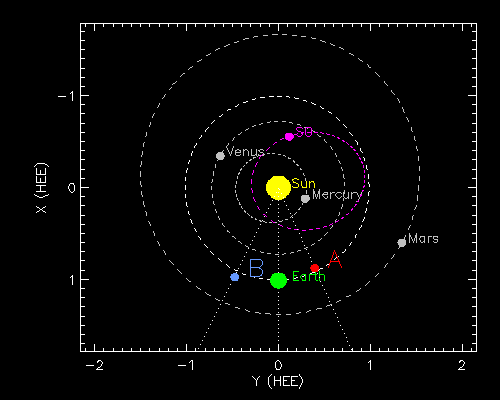 |
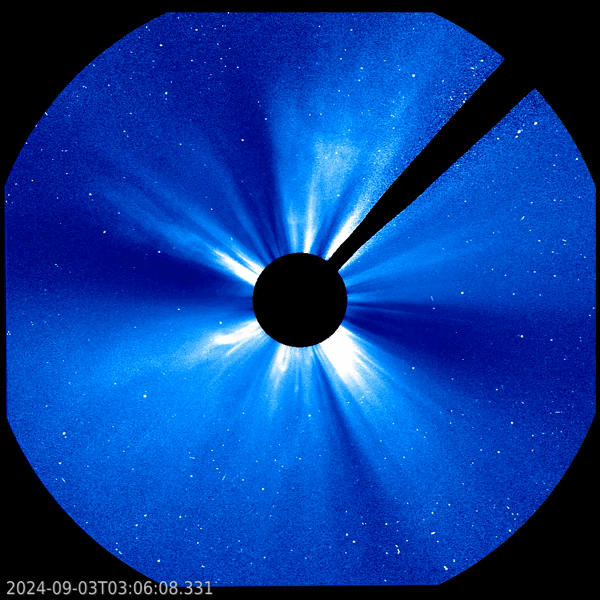 |
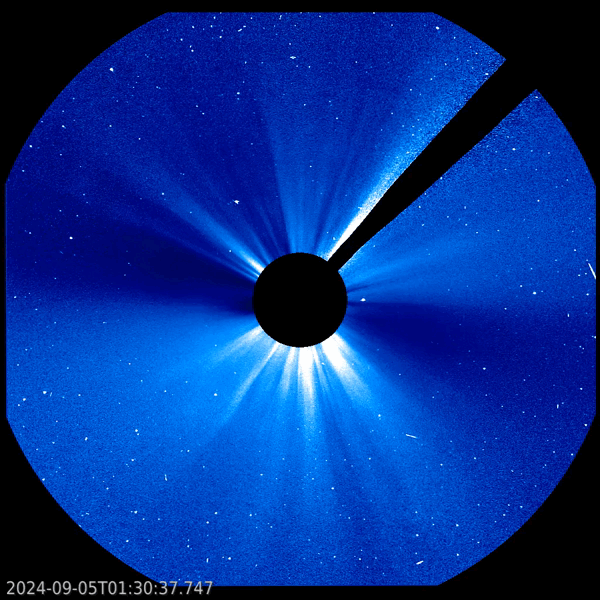 |
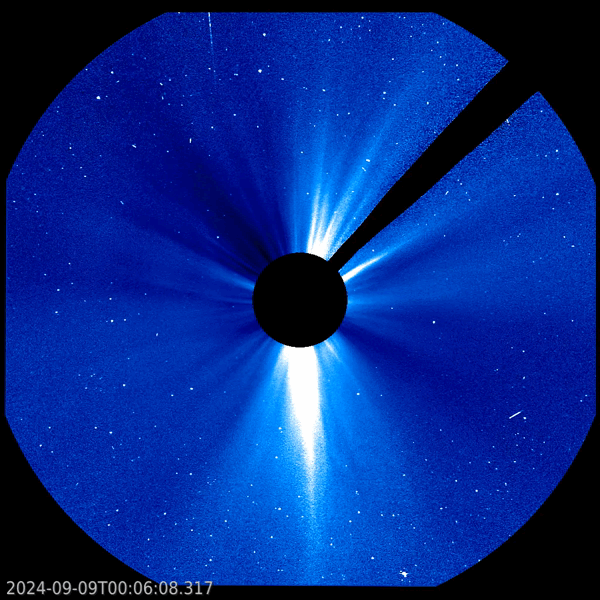 |
Also the filaments contributed to the eruptive activity. A small filament in the northwest quadrant erupted late on 7 / early on 8 September, showing a dynamic ("twisting") unfolding of the ejected material (GOES/SUVI 304). The associated CME was thought to have an earth-directed component (SOHO coronagraph), but either it left no obvious solar wind signature, or it got embedded in other CMEs.

Flaring activity increased again from 11 to 13 September due to a string of active sunspot groups that approached the southwest solar limb. In particular NOAA 3811 was the source of numerous moderate flares as well as a series of M5 flares (GOES/SUVI 094 imagery underneath). This activity drove the x-ray background flux above the M1-level from 12 September around 21:30UTC until 13 September around 09:30UTC, meaning that the GOES could only detect M-class or stronger flares for nearly a half day. A solid CME was associated with one of three M1 flares early on 13 September, as shown in the coronagraphic images underneath by SOHO/LASCO. The outline of the occulted solar disk half provides an idea of the size of the CME.

